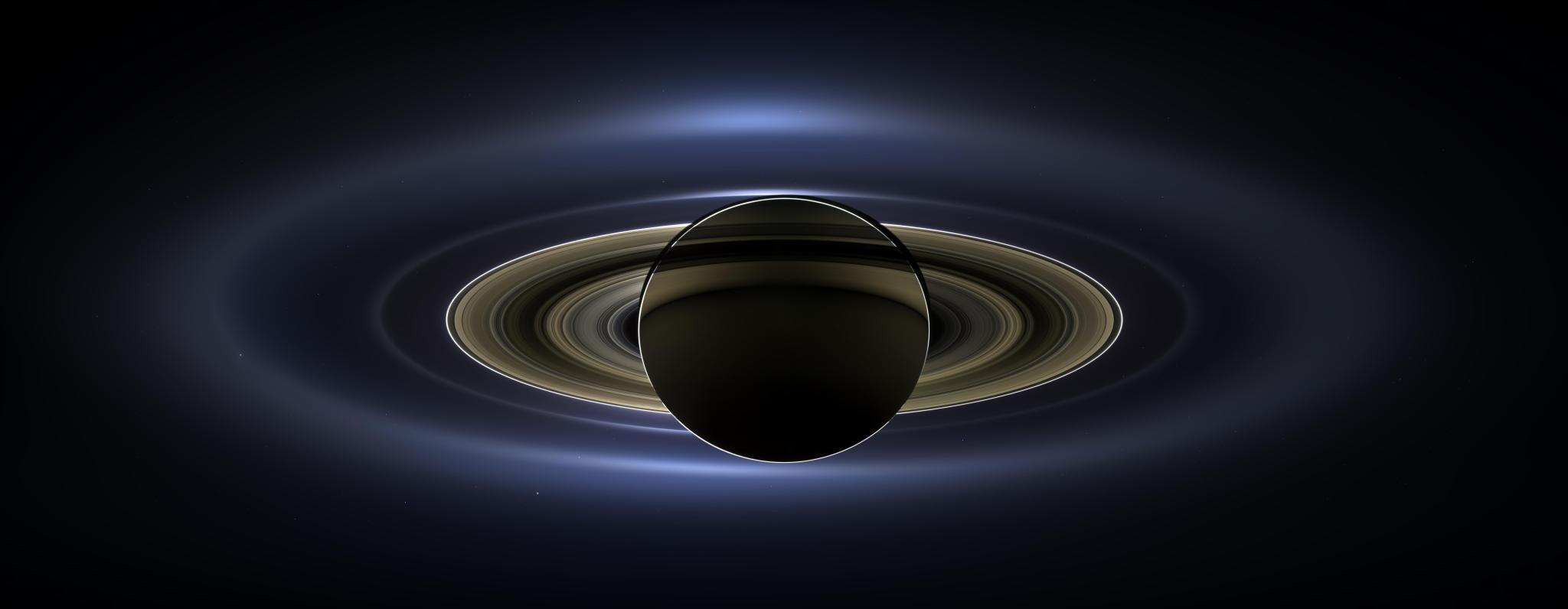
On July 19, 2013, NASA's Cassini spacecraft had a rare opportunity to image Saturn and, far in the background, Earth. This image spans about 404,880 miles (651,591 kilometers) across.
With the Sun's powerful and potentially damaging rays eclipsed by Saturn itself, Cassini's onboard cameras were able to take advantage of this unique viewing geometry. They acquired a panoramic mosaic of the Saturn system that allows scientists to see details in the rings and throughout the system as they are backlit by the sun. This mosaic is special as it marks the third time our home planet was imaged from the outer solar system; the second time it was imaged by Cassini from Saturn's orbit; and the first time ever that inhabitants of Earth were made aware in advance that their photo would be taken from such a great distance.
Before the mission ended in 2017, Cassini was already a powerful influence on future exploration. Lessons learned during Cassini's mission are being applied in NASA's Europa Clipper mission. The mission uses an orbital tour design derived from the way Cassini explored Saturn. Launched in 2024, Europa Clipper will reach Jupiter in April 2030 and make dozens of flybys of the planet's icy moon to determine whether there are places below the surface that could support life.






